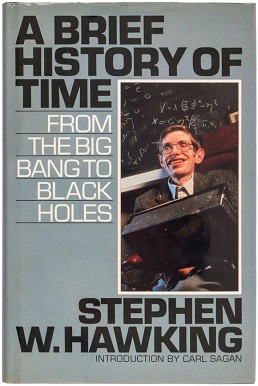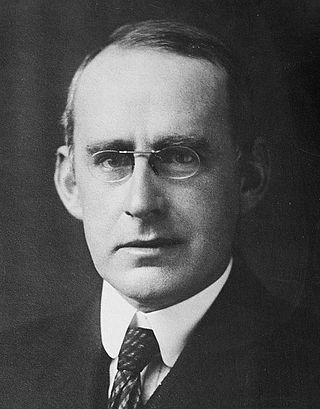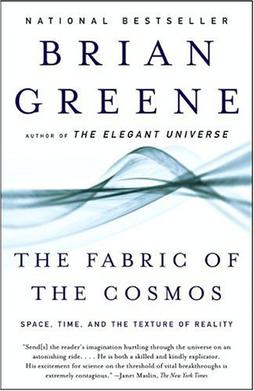
A theory of everything (TOE), final theory, ultimate theory, unified field theory or master theory is a hypothetical, singular, all-encompassing, coherent theoretical framework of physics that fully explains and links together all aspects of the universe. Finding a theory of everything is one of the major unsolved problems in physics.

A Brief History of Time: From the Big Bang to Black Holes is a book on theoretical cosmology by English physicist Stephen Hawking. It was first published in 1988. Hawking wrote the book for readers who had no prior knowledge of physics.

In the philosophy of space and time, eternalism is an approach to the ontological nature of time, which takes the view that all existence in time is equally real, as opposed to presentism or the growing block universe theory of time, in which at least the future is not the same as any other time. Some forms of eternalism give time a similar ontology to that of space, as a dimension, with different times being as real as different places, and future events are "already there" in the same sense other places are already there, and that there is no objective flow of time.
In philosophy, philosophy of physics deals with conceptual and interpretational issues in modern physics, many of which overlap with research done by certain kinds of theoretical physicists. Philosophy of physics can be broadly divided into three areas:

T-symmetry or time reversal symmetry is the theoretical symmetry of physical laws under the transformation of time reversal,
Physical causality is a physical relationship between causes and effects. It is considered to be fundamental to all natural sciences and behavioural sciences, especially physics. Causality is also a topic studied from the perspectives of philosophy, statistics and logic. Causality means that an effect can not occur from a cause that is not in the back (past) light cone of that event. Similarly, a cause can not have an effect outside its front (future) light cone.

The arrow of time, also called time's arrow, is the concept positing the "one-way direction" or "asymmetry" of time. It was developed in 1927 by the British astrophysicist Arthur Eddington, and is an unsolved general physics question. This direction, according to Eddington, could be determined by studying the organization of atoms, molecules, and bodies, and might be drawn upon a four-dimensional relativistic map of the world.
Indeterminism is the idea that events are not caused, or are not caused deterministically.
In classical statistical mechanics, the H-theorem, introduced by Ludwig Boltzmann in 1872, describes the tendency to decrease in the quantity H in a nearly-ideal gas of molecules. As this quantity H was meant to represent the entropy of thermodynamics, the H-theorem was an early demonstration of the power of statistical mechanics as it claimed to derive the second law of thermodynamics—a statement about fundamentally irreversible processes—from reversible microscopic mechanics. It is thought to prove the second law of thermodynamics, albeit under the assumption of low-entropy initial conditions.
The transactional interpretation of quantum mechanics (TIQM) takes the wave function of the standard quantum formalism, and its complex conjugate, to be retarded and advanced waves that form a quantum interaction as a Wheeler–Feynman handshake or transaction. It was first proposed in 1986 by John G. Cramer, who argues that it helps in developing intuition for quantum processes. He also suggests that it avoids the philosophical problems with the Copenhagen interpretation and the role of the observer, and also resolves various quantum paradoxes. TIQM formed a minor plot point in his science fiction novel Einstein's Bridge.
Philosophy of space and time is the branch of philosophy concerned with the issues surrounding the ontology and epistemology of space and time. While such ideas have been central to philosophy from its inception, the philosophy of space and time was both an inspiration for and a central aspect of early analytic philosophy. The subject focuses on a number of basic issues, including whether time and space exist independently of the mind, whether they exist independently of one another, what accounts for time's apparently unidirectional flow, whether times other than the present moment exist, and questions about the nature of identity.
In physics, Loschmidt's paradox, also known as the reversibility paradox, irreversibility paradox, or Umkehreinwand, is the objection that it should not be possible to deduce an irreversible process from time-symmetric dynamics. This puts the time reversal symmetry of (almost) all known low-level fundamental physical processes at odds with any attempt to infer from them the second law of thermodynamics which describes the behaviour of macroscopic systems. Both of these are well-accepted principles in physics, with sound observational and theoretical support, yet they seem to be in conflict, hence the paradox.
A temporal paradox, time paradox, or time travel paradox, is a paradox, an apparent contradiction, or logical contradiction associated with the idea of time travel or other foreknowledge of the future. While the notion of time travel to the future complies with the current understanding of physics via relativistic time dilation, temporal paradoxes arise from circumstances involving hypothetical time travel to the past – and are often used to demonstrate its impossibility.

The Kalam cosmological argument is a modern formulation of the cosmological argument for the existence of God. It is named after the Kalam, from which its key ideas originated. William Lane Craig was principally responsible for giving new life to the argument in the 20th century, due to his The Kalām Cosmological Argument (1979), among other writings.

The Fabric of the Cosmos: Space, Time, and the Texture of Reality (2004) is the second book on theoretical physics, cosmology, and string theory written by Brian Greene, professor and co-director of Columbia's Institute for Strings, Cosmology, and Astroparticle Physics (ISCAP).

A physical paradox is an apparent contradiction in physical descriptions of the universe. While many physical paradoxes have accepted resolutions, others defy resolution and may indicate flaws in theory. In physics as in all of science, contradictions and paradoxes are generally assumed to be artifacts of error and incompleteness because reality is assumed to be completely consistent, although this is itself a philosophical assumption. When, as in fields such as quantum physics and relativity theory, existing assumptions about reality have been shown to break down, this has usually been dealt with by changing our understanding of reality to a new one which remains self-consistent in the presence of the new evidence.
Entropy is one of the few quantities in the physical sciences that require a particular direction for time, sometimes called an arrow of time. As one goes "forward" in time, the second law of thermodynamics says, the entropy of an isolated system can increase, but not decrease. Thus, entropy measurement is a way of distinguishing the past from the future. In thermodynamic systems that are not isolated, local entropy can decrease over time, accompanied by a compensating entropy increase in the surroundings; examples include objects undergoing cooling, living systems, and the formation of typical crystals.
Retrocausality, or backwards causation, is a concept of cause and effect in which an effect precedes its cause in time and so a later event affects an earlier one. In quantum physics, the distinction between cause and effect is not made at the most fundamental level and so time-symmetric systems can be viewed as causal or retrocausal. Philosophical considerations of time travel often address the same issues as retrocausality, as do treatments of the subject in fiction, but the two phenomena are distinct.

The Boltzmann brain thought experiment suggests that it might be more likely for a single brain to spontaneously form in a void, complete with a memory of having existed in our universe, rather than for the entire universe to come about in the manner cosmologists think it actually did. Physicists use the Boltzmann brain thought experiment as a reductio ad absurdum argument for evaluating competing scientific theories.
A Gold universe is a cosmological model of the universe. In these models, the universe starts with a Big Bang and expands for some time, with increasing entropy and a thermodynamic arrow of time pointing in the direction of the expansion. After the universe reaches a low-density state, it recontracts, but entropy now decreases, pointing the thermodynamic arrow of time in the opposite direction, until the universe ends in a low-entropy, high-density Big Crunch. There are two models of the universe which support the possibility of a reversed direction of time. The first begins with a state of low entropy at the Big Bang which continually increases until the Big Crunch. The second, a Gold Universe, posits that entropy will increase only until a moment of contraction, then gradually decrease. This latter model suggests the universe will become more orderly after the moment of contraction. The Gold model has been linked to the possibility of retrocausal change, questions concerning the preservation of information in a time-reversed universe, and causation in general. The Gold Universe is named after the cosmologist Thomas Gold, who proposed the model in the 1960s.









